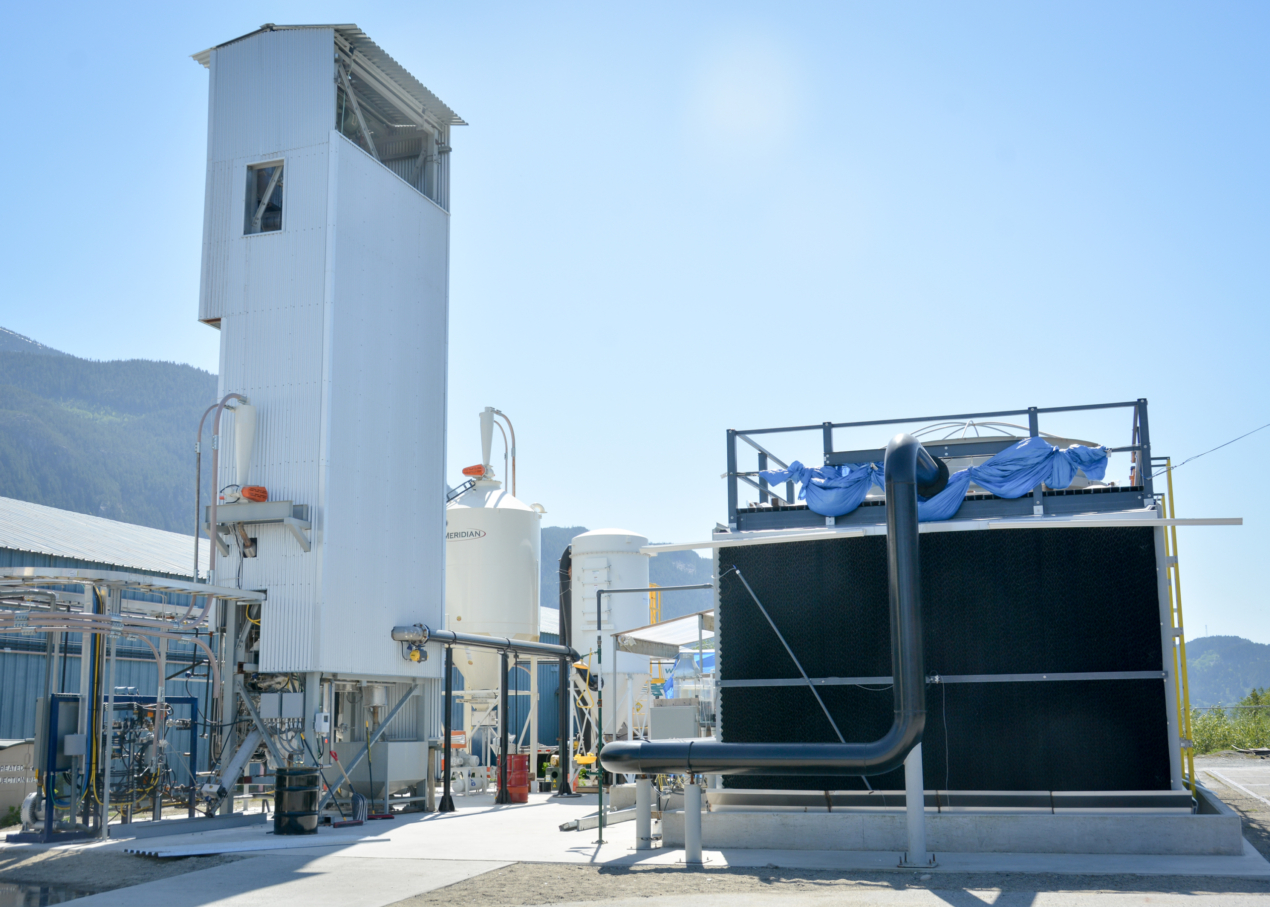Is direct air capture going to save our industries and our planet?
24/06/2022

We are about to experience the greatest disaster of our lives. Climate crisis is here. We can see the implications on daily lives – draughts, heat waves, uncertain weather. In my TEDx Talk, I emphasised the impact such drastic events have on island communities, not only influencing local supply chains but primarily the quality of life. These are the implications that all of us will face if we don’t act now.
We have globally committed to reducing our emissions close to net-zero by 2050 in the Paris Agreement. The UK has implemented the Clean Growth Strategy and more recently, the 10-point plan that aims to tackle climate emergency. However, reducing our carbon emissions from power and industrial sectors won’t be enough. Some industries are inherently difficult to decarbonise, as the CO2 emissions stem from the industrial process itself, rather than from the combustion of fossil fuels. Decarbonisation of the heating and transportation sectors is another hurdle that we need to tackle, and we may not make it on time. That’s why negative emission technologies (NETs) are crucial for us to meet net-zero commitments.
Direct air capture (DAC) is an interesting approach as it allows for scrubbing CO2 directly from the atmosphere. However, its role as a transformational technology is often misunderstood. After all, DAC isn’t meant to be treated as a substitute for emission reduction technologies, providing a green light for further fossil fuels use. DAC is meant to close the emissions gap that cannot be achieved by low-carbon measures alone. Not many people understand that DAC can give rise to a circular carbon economy, enabling us to save our industries and planet.
Although we may need to scale up DAC deployment in the next 15-20 years, we need to ramp up our R&D activity now to drive the cost down. Our recent review of DAC published in Energy and Environmental Science has shown that there is still a limited number of demonstration projects. The minimum cost of CO2 removal falls mostly between 400–800 €/tCO2. A recent project by my tutor group at Cranfield University has investigated how much it would cost for the University to close the 8% gap between actual CO2 emissions and target CO2 emissions via implementing on-site DAC powered by a combination of biomass CHP and solar energy. Their study showed that to offset 880 tonnes of CO2 per year, the University would need to invest £4.4m over 10 years. This is equivalent to 920 €/tCO2, a figure that is competitive with DAC offsets offered currently on the market.
Nevertheless, the current cost of CO2 removal via DAC remains high and isn’t competitive with other NETs. To enable a circular carbon economy, where we would utilise CO2 from the air for net-zero chemicals and fuels production, we need to the cost of CO2 removal to 50–100 €/tCO2. My research group has demonstrated that this can be achieved by considering new air contactors and process designs. Therefore, I’m certain that DAC, together with low-carbon energy and hydrogen sources, will play a crucial part in our net-zero transition.
Image: Carbon Engineering plant in Squamish, B.C. April 20, 2016.
Credit: Stephen Hui, Pembina Institute.
http://www.pembina.org/
Categories & Tags:
Leave a comment on this post:
You might also like…
Keren Tuv: My Cranfield experience studying Renewable Energy
Hello, my name is Keren, I am from London, UK, and I am studying Renewable Energy MSc. My journey to discovering Cranfield University began when I first decided to return to academia to pursue ...
3D Metal Manufacturing in space: A look into the future
David Rico Sierra, Research Fellow in Additive Manufacturing, was recently involved in an exciting project to manufacture parts using 3D printers in space. Here he reflects on his time working with Airbus in Toulouse… ...
A Legacy of Courage: From India to Britain, Three Generations Find Their Home
My story begins with my grandfather, who plucked up the courage to travel aboard at the age of 22 and start a new life in the UK. I don’t think he would have thought that ...
Cranfield to JLR: mastering mechatronics for a dream career
My name is Jerin Tom, and in 2023 I graduated from Cranfield with an MSc in Automotive Mechatronics. Originally from India, I've always been fascinated by the world of automobiles. Why Cranfield and the ...
Bringing the vision of advanced air mobility closer to reality
Experts at Cranfield University led by Professor Antonios Tsourdos, Head of the Autonomous and Cyber-Physical Systems Centre, are part of the Air Mobility Ecosystem Consortium (AMEC), which aims to demonstrate the commercial and operational ...
Using grey literature in your research: A short guide
As you research and write your thesis, you might come across, or be looking for, ‘grey literature’. This is quite simply material that is either unpublished, or published but not in a commercial form. Types ...







Can’t stop going through this post over and over again. There’s too much to do to achieve net Zero emission and that can only be possible if we maintain focus knowing that climate emergency is here. All hands must be on deck, we must save our planet from burning. Climate crisis is more than terrorism and weapon war put together.
This is the course I want to dedicate the rest of my life to. Looking forward to joining Dr Dawid Hanak and his team for my Masters program in Carbon Capture and Storage.